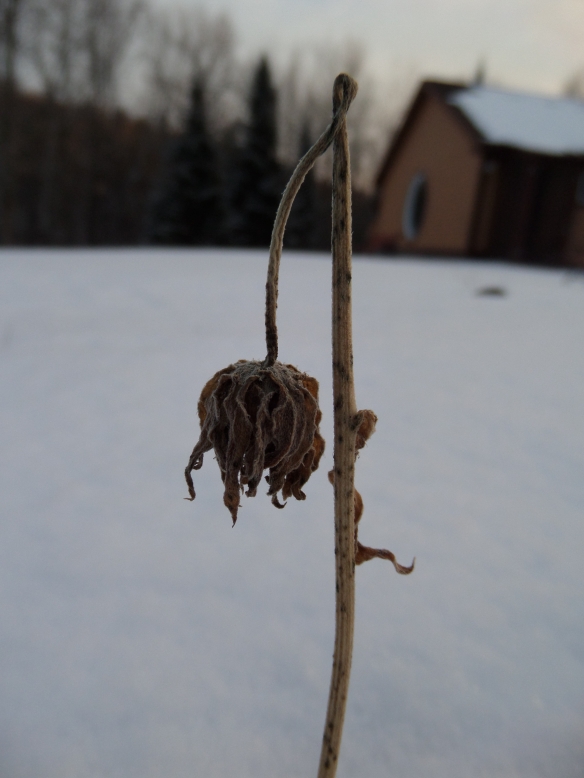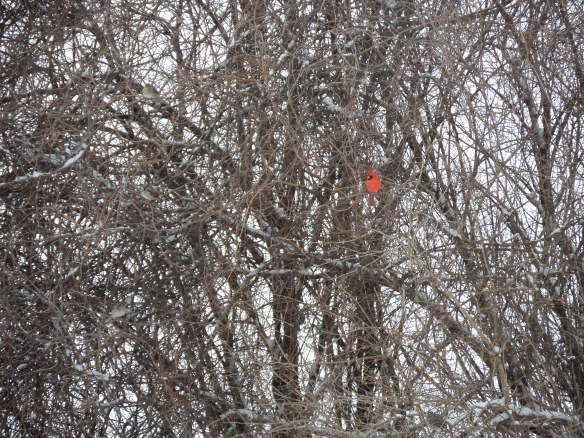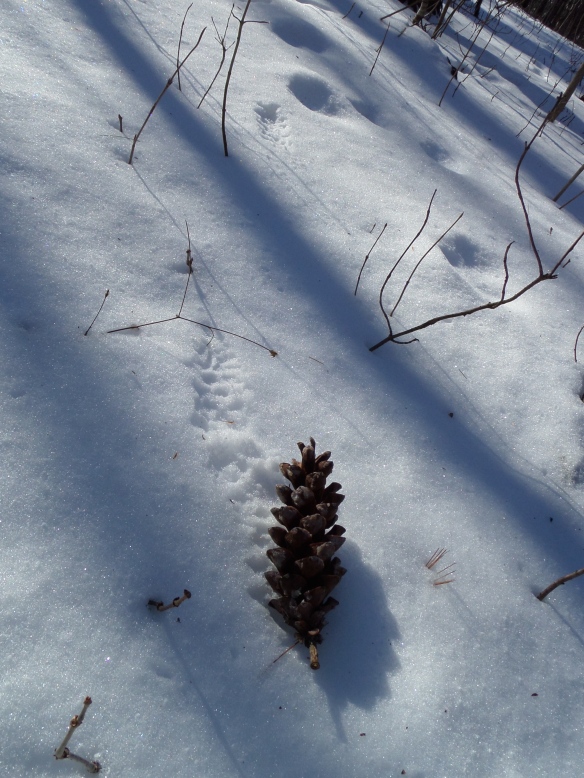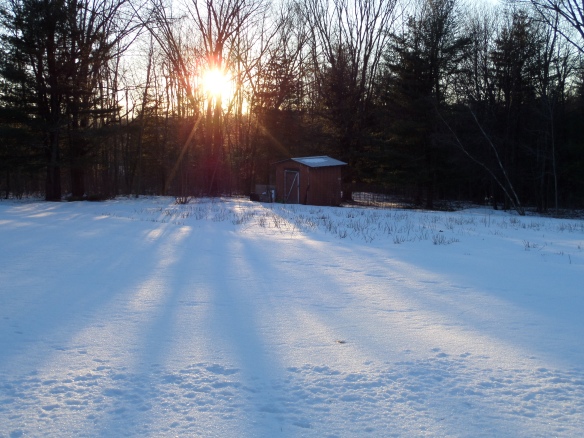I’m still talking to a butterfly, in my kitchen.
February 12, 2015, later that day. Since she would not come to the tiny plastic feeder that I put out, this afternoon I spilled some of the honey water right next to her, onto the top of the air conditioner. She actually came and drank! It was fascinating to watch: antennae started waving once her tarsi (feet)—through which butterflies can “taste”—hit the liquid; her proboscis unfurled, so long it went under her belly, but into the fluid; and then she stepped away and curled the proboscis up again.

See the backwards C-shaped, rolled up proboscis in front of the green compound eye? The feathery looking bits above that are the “palps” which sense what is food and not-food.
Thinking about her survival, I flit between hard-edged City Woman and warm Earth Mother. Well, anyway, I say, there’s your honey water for a couple days. Don’t get stuck in it. Now she’s looking all satisfied, her previously flopped down abdomen—which is the hind end, with the center part actually called the thorax—bent up high.
Am I stupid to put out this sugary fluid for food? Aside from getting stuck in it, her wings might get wet! I blow gently; no, she can pull them up just fine. Nothing like a snack, I think. I could use one myself.
I am playing with anthropomorphism again, I realize, but am really, really clear I know I’m doing it.
****
The Dainty Sulphur is a small crushable creature, one of trillions.
I’ve stepped on, swatted and flattened probably hundreds of bugs its size and much larger: horrifying palmetto bugs and leaping hairy spiders in the Florida of my childhood, and hordes of German roaches in multiple student apartments. Even mice and rats were caught and drowned when they overran other living spaces. My mother always said to invading creatures as she squashed or sprayed them: You can live outside, but I can’t let you stay here. This is MY space.
I don’t mind sharing, but not with things that bite or sting me, or spread disease. I’m really allergic to dust spider bites and mosquitos, but understand that larger spiders and thousand-leggers eat such critters, so yes there is a hierarchy of acceptable and unacceptable bugs in my living space. I can whisk unwanted ones—bees, wasps—out the window but if they don’t go I can become insistent, and murderous—depending on how you define murder.
Luckily butterflies don’t hurt humans, though we can hurt them.
Carolus Linnaeus was the Swedish physician who established “binomial nomenclature,” the multitiered system of scientifically naming plants and animals. I recall the huge bronze statue (which, when my children were small, you could still belly up to and touch) of a kneeling Linnaeus at the Chicago Botanic Garden. Up close, Linnaeus’ roughly hewn figure was formed of creatures and plants alighted on him, under him, wrapping him; with the collecting bag on his hip and eyes open and curious, his eager hand reached out to touch and identify still more on the ground.
Dainty Sulphur Butterflies, in Linnaeus’ classification are truly Insecta, and moving more specifically down the entomological nomenclature, fall into Lepidoptera (moths & butterflies) and Papilionoidea (non-skipper butterflies; do you see the French word for butterfly “Papillon”?), Pieridae (whites, yellows, sulphurs), Nathalis (sulphurs) and her full name: Nathalis iole.
Like a softie, I’ll leave the sweet water there for a while, probably wipe it up and then put out fresh, for this particular Nathalis iole. (Boy I hope I’m right that it’s a Dainty Sulphur! I would hate to find out I am All-Wrong scientifically.)
I cannot guarantee this butterfly’s survival or quality of life. However, I don’t have to squash this insect either, “put it out of its misery.” She does not harm me, and in fact is a little company, on a cold cold day.
Because bitter wind chills, twenty and thirty below, cause me to hunker down inside, both of us are stuck in my apartment for now. And I am getting to know this creature better.
To be continued.













